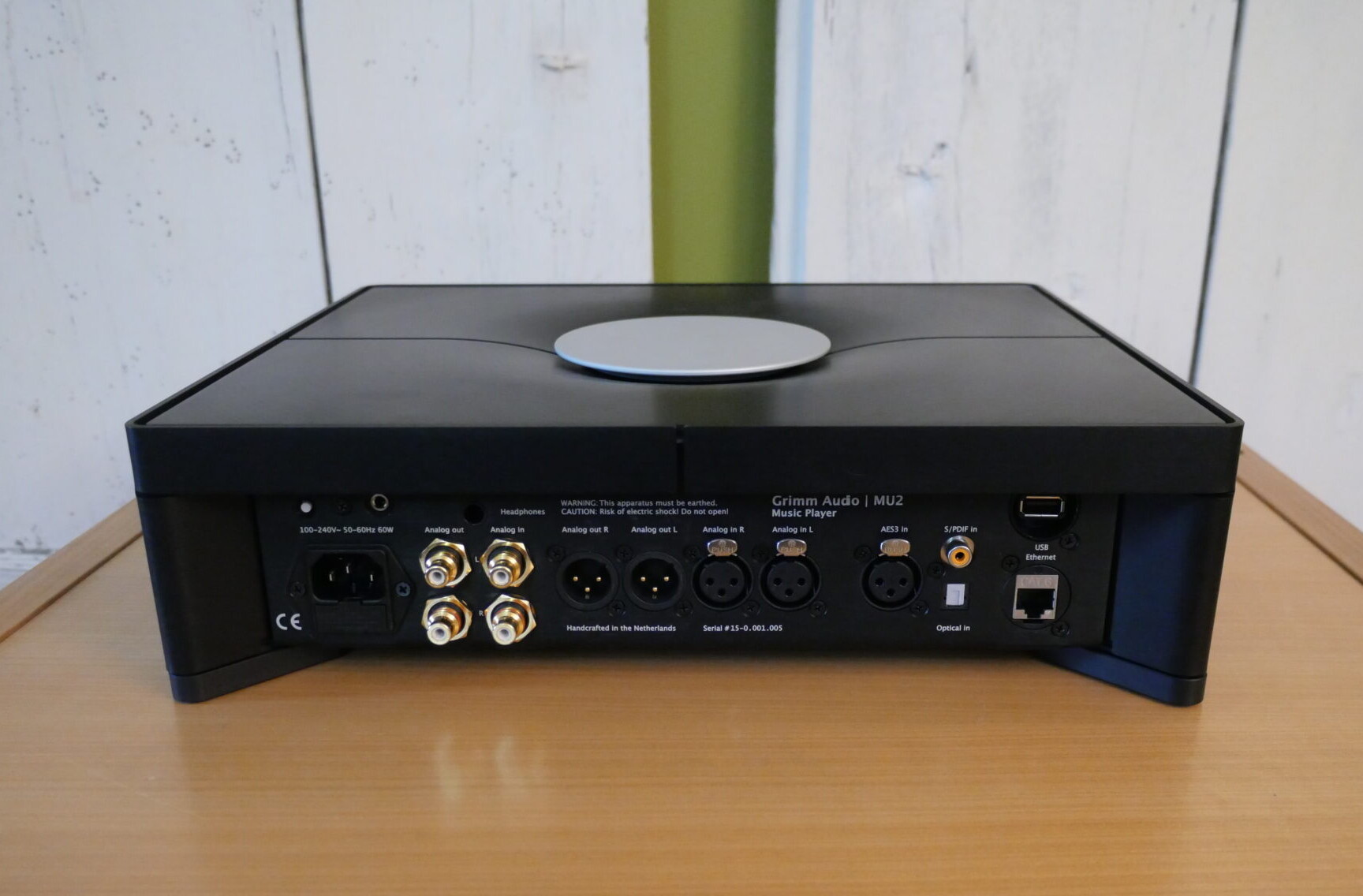
Physically, the MU2 is a compact, narrower than standard, slightly bluff box that sits solidly on its four, diagonally disposed feet. The squat proportions and appearance are relieved by the obligatory display screen, flush mounted in the front-panel and a dished top-plate that surrounds the large diameter control wheel, flat and finished in contrasting silver. That wheel offers the by now familiar push and twist options and controls all aspects of the MU2’s operation. However, it’s horizontal disposition and lack of an accessible ‘edge’ make it a real love-it-or-hate-it feature: I’ve seen both responses. Perhaps pre-conditioned by so many ‘knobs’ arranged to turn in the vertical plane, I found it awkward and less than intuitive. Others begged to disagree, finding it fresh, different and distinctive. Either way, if you are auditioning the Grimm, get some hands-on with the manual interface, to discover which camp you sit in.
Having said that, the manual control isn’t the be-all and end-all as Grimm also provides comprehensive, web-based control software, a solution that is inherently both iOS and Android compatible. Given that most users will be streaming music via the MU2 (and thus connecting it to the web), that’s a perfectly logical step – one that’s pretty much expected these days. Around the back of the unit, the multitude of input and output connectors are cleanly distributed and well-spaced. Such multi-dimensional units as this can often be handicapped by cluttered and poorly labelled connections, but the MU2 is a model of clarity and practicality.
Inside, Grimm’s own FPGA-based Major DAC (their name for the DAC, not a designator) is combined with a Roon Core to provide processing of all digital sample-rates and signals. That also gives you access to all of Roon’s control/filtering functionality too – at least for streamed music. The analog output from the DAC is fed via the source select to the relay-ladder volume control. The analogue inputs are routed directly to the selector and then the volume control. Unlike the CH Precision I1, the MU2 keeps analogue signals entirely in the analogue domain (although that does rob Grimm owners of the amusing spectacle of vinyl-aficionados rapidly back pedaling when they realise the phono-stage they’ve been admiring is actually operating in the digital domain!)
Playing nice…
With any review product, one of the first decisions concerns partnering equipment and, in this case, that revolved around eliminating constant comparisons with the same system employing a line-stage. Adding a line-stage to the equation (I tried both the CH L1 and the TEAD Vibe) offers a clear and obvious musical and sonic improvement, with gains in terms of temporal and spatial coherence, bandwidth and dynamic range. So, no big surprise there. But that’s not the point. The purpose of this review is to use the MU2 as intended and in the absence of a line-stage, which is exactly what I did. I ran the Grimm with both digital and analogue sources and a range of power amps/speakers. Disc replay was from the CH D1.5 CD/SACD transport, with streaming via Qobuz or Tidal and file replay from the Roon Nucleus with Mini-ARC4/DC6 PSU or the MU2’s own internal SSD. Network components were drawn from Reiki Audio (switches and cables) used in conjunction with Aardvark filters and the Telos Macro G active ethernet noise reducer. Analogue source was the Kuzma Stabi M/4Point fed via the TEAD The Groove phono-stage. Amplifiers ranged from the Jadis JA30, Berning Quadrature-Z and TEAD Linear B to the Trilogy 995R mono-blocs and one or two CH Precision A1.5s.

